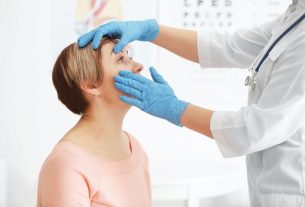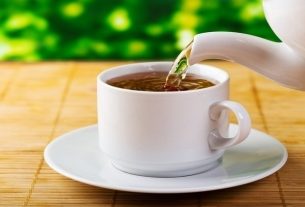A gallstone is a hardened piece of digestive fluids and may not cause symptoms, however, when the stone blocks the gallbladder ducts, symptoms may appear, such as severe pain on the right side of the belly, constant diarrhea, fever, nausea or vomiting. .
Gallstones are formed inside the gallbladder, generally due to excess cholesterol in the bile and difficulty emptying the gallbladder. These stones tend to increase in size over time and impair the flow of bile from this organ.
The treatment of gallstones, also called cholelithiasis, is carried out by a gastroenterologist or hepatologist and varies with the severity of the symptoms, and the use of analgesics to relieve pain or antibiotics and surgery may be indicated in the most serious cases. Better understand the main treatment options for gallstones.

Symptoms of gallstones
The main symptoms of gallstones are:
- Sudden pain in the stomach region or below the ribs on the right side;
- Nausea;
- Vomiting;
- Pain in the back and/or right shoulder;
- Loss of appetite;
- Feeling of a full belly;
- Diarrhea.
Although gallstones may cause few or no symptoms for months, when pain does occur, it is most common after eating fatty or spicy foods. See more details on the main symptoms of gallstones and what to do.
If you suspect gallstones, it is important to consult a general practitioner or gastroenterologist for an evaluation, especially if there are symptoms such as yellowing of the skin and eyes.
However, if symptoms such as fever, persistent abdominal pain, drowsiness or low blood pressure occur, they may indicate more serious cases, and it is recommended to seek emergency care.
Online symptom test
To find out the chance of having gallstones, select the symptoms presented in the following test:
The symptom test is only a guidance tool and does not serve as a diagnosis or replace consultation with a gastroenterologist or hepatologist.
How to confirm the diagnosis
The diagnosis of gallstones is made by a gastroenterologist, hepatologist or general practitioner, through the evaluation of symptoms, health history and laboratory tests.
Make an appointment with a gastroenterologist in the nearest region:
Taking care of your health has never been easier!
Tests for gallstones
To confirm the diagnosis of gallstones, the doctor may order tests, such as:
In addition, other tests such as chest X-ray and electrocardiogram may also be indicated to rule out other causes of pain, such as heart attack or pneumonia.
Read too: Symptoms similar to gallstones (but which are not)
Possible causes
Gallstones are generally caused by excess cholesterol in the bile and difficulty emptying the gallbladder, leading to the formation of small crystals that tend to increase in size, forming larger stones.
Furthermore, in women, people over 40 years of age and pregnant women the risk of developing gallstones is higher, and is also high in the case of diseases such as obesity, high cholesterol or a family history of gallstones.
Read too: Gallstones in pregnancy: symptoms, causes and treatment
How the treatment is carried out
Gallstone treatment may involve:
1. Use of medications
Medications such as analgesics and antiemetics can be used in case of gallstones, to alleviate symptoms such as pain and nausea. Furthermore, depending on the type of gallstone, the doctor may also prescribe medications to dissolve the stones, such as ursodiol and ursodeoxycholic acid. Check out what ursodeoxycholic acid is for and how to use it.
If an infection is suspected, medications such as antibiotics may also be necessary, and admission to the hospital is generally recommended.
2. Surgery to remove the gallbladder
When symptoms are frequent or in case of fever and persistent pain, removal of the gallbladder by surgery is usually indicated, due to the risk of complications such as cholangitis or choledocholithiasis. See what laparoscopy is and how it is performed.
3. Changes in habits
Practicing physical exercise regularly stimulates the emptying of the gallbladder and helps prevent the growth of stones and the emergence of new ones. Additionally, losing weight is recommended, however, measures to lose weight quickly, such as fasting, are not indicated.
4. Diet for gallstones
It is recommended to avoid fatty foods and excess proteins and sugars in your diet. Therefore, excessive consumption of foods such as meat, bread, pasta and alcoholic beverages should be avoided in the case of gallstones. Additionally, some fattier fruits like coconut or avocado should also be avoided. Understand better what the diet should be like for those with gallstones.
Natural treatment options
There are some natural treatment options, such as dandelion tea or milk thistle, which have properties that reduce the formation of stones.
Read too: 4 teas for gallstones and how to prepare
These natural remedies can be used to complete medication treatment, however, their use must be communicated to the doctor and does not replace prescribed medication. Discover more options for natural remedies for gallstones.
How to prevent
Measures to prevent gallstones include:
- Lose weight;
- Practice physical exercise regularly;
- Avoid measures to lose weight quickly;
- Adopt a balanced diet, avoiding excess calories;
- Quit smoking;
- Avoid excessive alcohol consumption;
- Eat more foods such as fruits, fiber, vegetables and fish.
Furthermore, in the case of diseases such as high cholesterol or diabetes, it is important to treat them appropriately due to the greater risk of developing gallstones.
Bibliography
- TANAJA, J.; LOPEZ, R. A.; MEER, J. M. IN: STATPEARLS (INTERNET). TREASURE ISLAND (FL): STATPEARLS PUBLISHING. Cholelithiasis. 2023. Available at: <https://www.ncbi.nlm.nih.gov/books/NBK470440/>. Accessed on March 14, 2024
- PAK, Mila; LINDSETH, Glenda. Risk Factors for Cholelithiasis. Gastroenterol Nurs. Vol.39, n.4. 297–309, 2022
- SAHOO, Amulya R. et al. Chronic Cholelithiasis treated with Homoeopathic medicine in 50th millesimal potency: A case report. Indian Journal of Research in Homeopathy. Vol.14, n.1. 57-63, 2020
- STATPEARLS. Gallstones (Cholelithiasis). 2022. Available at: <https://www.ncbi.nlm.nih.gov/books/NBK459370/>. Accessed on 01 Sep 2022
- LITTLEFIELD, Amber; LENAHAN, Christy. Cholelithiasis: Presentation and Management. J Midwifery Womens Health. Vol.64, n.3. 289-297, 2019
- CIANCI, Pasquale; RESTINI, Enrico. Management of cholelithiasis with choledocholithiasis: Endoscopic and surgical approaches. World J Gastroenterol. Vol.27, n.28. 4536-4554, 2021
- GOOD, Carsten; SCHLAFER, Simon; LAMMERT, Frank. The Treatment of Gallstone Disease. Dtsch Ärztebl Int. Vol.117, n.9. 148-158, 2020

Sign up for our newsletter and stay up to date with exclusive news
that can transform your routine!
Warning: Undefined array key "title" in /home/storelat/public_html/wp-content/plugins/link-whisper-premium/templates/frontend/related-posts.php on line 12
Warning: Undefined array key "title_tag" in /home/storelat/public_html/wp-content/plugins/link-whisper-premium/templates/frontend/related-posts.php on line 13




